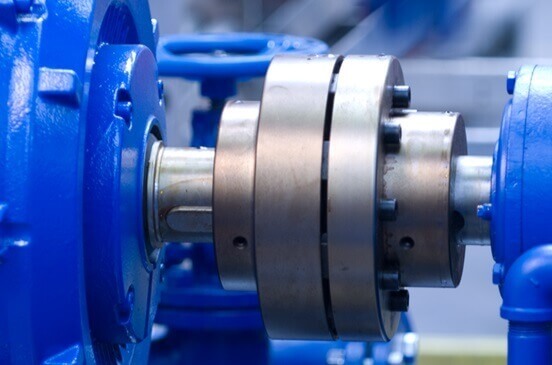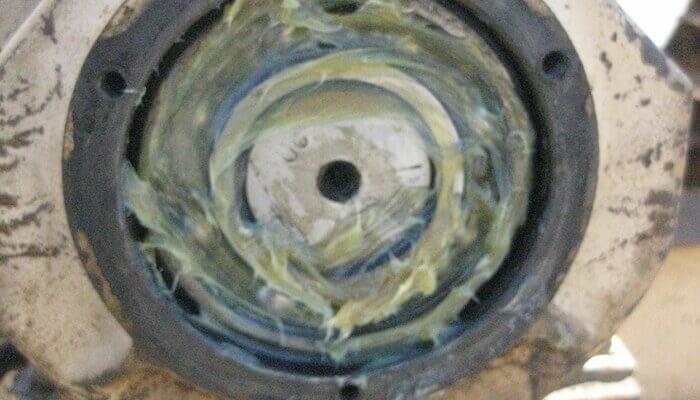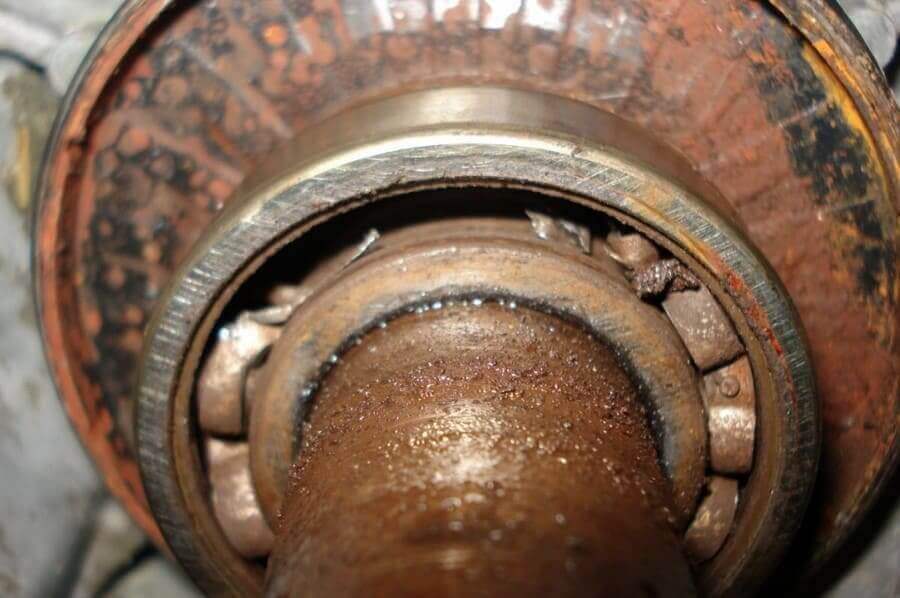Motor vibration is a common problem. However, during the period of operation, little attention is paid to it. The result of the beating can be a crack in the engine bed, overheating and failure of bearings, bending of the rotor, which ultimately will lead to failure of the electric motor. Timely diagnostics of the quality of operation of an electric machine will help identify increased noise and vibration and quickly eliminate them.
Content:
- Causes of occurrence
- Vibration characteristics
- Vibration measuring instruments
- Troubleshooting Algorithm
Causes of occurrence
Vibrations of electric machines can occur at idle, then the source of the defect is magnetic in nature (incorrect air the gap between the stator and the rotor, delamination of the varnish of the windings, and so on) or at the time of start-up and under load, then the source of the problem mechanical.
Mechanical sources of vibration include shaft bending (can be both a consequence and a cause), misalignment rotor, overheating of bearings (for example, due to lack of lubrication), loosening of threaded connections of fastening elements electric motor. Also, the mode of use of the electric motor (generator or propeller) can explain the cause of malfunctions, such as broken fan blades or misalignment of the clutch when rotating hydraulic units.
Vibration characteristics
When measuring vibration, its vertical and horizontal components are measured (or as the axial and transverse ones are also called). There are several concepts of vibration characteristics, let's see what they are and what they are measured in:
- Vibration velocity (measured in millimeters per second, mm / s) is a value that characterizes the movement of the measuring point along the axis of the electric motor.
- Vibration acceleration (measured in meters per second squared, m / s2) - direct dependence of vibration on the force that caused it. Vibration displacement (measured in micrometers, microns) - the magnitude of the amplitude, showing the distance between the extreme points during vibration.
When measuring vibration characteristics, as a rule, vibration velocity is measured, since it most accurately describes the nature of the problem. In this case, not the highest value of the vibration velocity is measured, but its root-mean-square value (RMS). Due to the fact that all the arrow devices according to the principle of operation (which were used earlier) are integrating. The permissible vibration standards for electric motors are given in the Rules for the Operation of Power Plants and Networks (PTE) and in GOST ISO 10816.
Since there are many different electrical machines, GOST R 56646-2015 will help you figure out which standard from the GOST ISO 10816 group is applicable to a particular electric motor. For example, compressors, pump motors, and other electrical drive applications may have different measurement standards and requirements.
These documents contain basic requirements, norms, recommendations, vibration state classes, etc.
Vibration measuring instruments
Vibration measuring instruments are divided into several types: vibrometer, vibrograph and vibration analyzer. The vibrometer, the simplest device, determines only one parameter (RMS vibration velocity). Vibrograph, a recording device that records the amplitude of vibrations. These two devices will only help to detect exceeding the norms.

Only a vibration analyzer can identify the reasons (based on the measured parameters) of violations of vibration characteristics. There are single-channel and multi-channel vibration analyzers, these devices allow you to load a program into them measured parameters from a computer, which after measurements will allow analysis, calculation and identification of the source vibrations. When using a vibration analyzer, vibration sensors are hung on the electric motor. In this way, the cause of the malfunction and the remedial measures can be determined precisely.
Troubleshooting Algorithm
There is a simple algorithm to identify and eliminate the causes of vibration in an electric motor. Inspect the running electric motor for the absence of loose bolts, covers, the reliability of fastening the engine to the frame. Next, you need to disconnect the engine and the mechanism driven by it. If the vibration has disappeared, then the reason is in the coupling (misalignment of the coupling halves, different weight of the fingers, and so on).

If vibration at idle speed is present after disconnecting the drive train. So the reason is in the electric motor itself, when the power is turned off (when the motor is freewheel), vibration should stop. If it stops when the power is off, then the air gap between the stator and the rotor is to blame. With a damping amplitude of vibrations when the power is off, the reason is a mechanical defect in the rotor (bending, crack, defect in the rotor barrel) or a defect in the coupling half.
If there is no vibration when the coupling half is removed, then it is in the coupling half, otherwise it is necessary to remove the rotor for dynamic balancing on the machine or to identify damage to the windings. When diagnosing an electric motor on rolling bearings, their malfunction is easy to identify - increased noise and strong heating.

A defect in plain bearings will manifest itself under load, if it is not possible to identify the causes of vibration under load, then, most likely, the bearings are to blame, it is necessary to replace them or diagnose separately (for example, connect vibration sensors to the installation site bearings).

If an increased heating of the bearings is detected, it is also necessary to measure the level of vibration characteristics, because the bearing itself is rarely the source of the problem, but rather as a consequence.

It is important to understand that on critical mechanisms (turbine units of hydroelectric power plants, electric motors in nuclear power plants, electric drives hydroelectric power stations and so on) the vibration level should be measured regularly, in accordance with the technical service. Measurements should be carried out by representatives of the manufacturer or specialists of an organization licensed to carry out this type of work. Measurements of vibration characteristics with measurement of the temperature of the bearings should be reflected in the form of the electric machine.
Now you know why the vibration of the electric motor occurs, as well as how the causes are identified and eliminated. We hope the provided instructions helped to find and solve the problem!
Related materials:
- What is contact bounce and how to fix it
- Why does the circuit breaker turn off?
- Malfunctions in electrical installations and their causes

